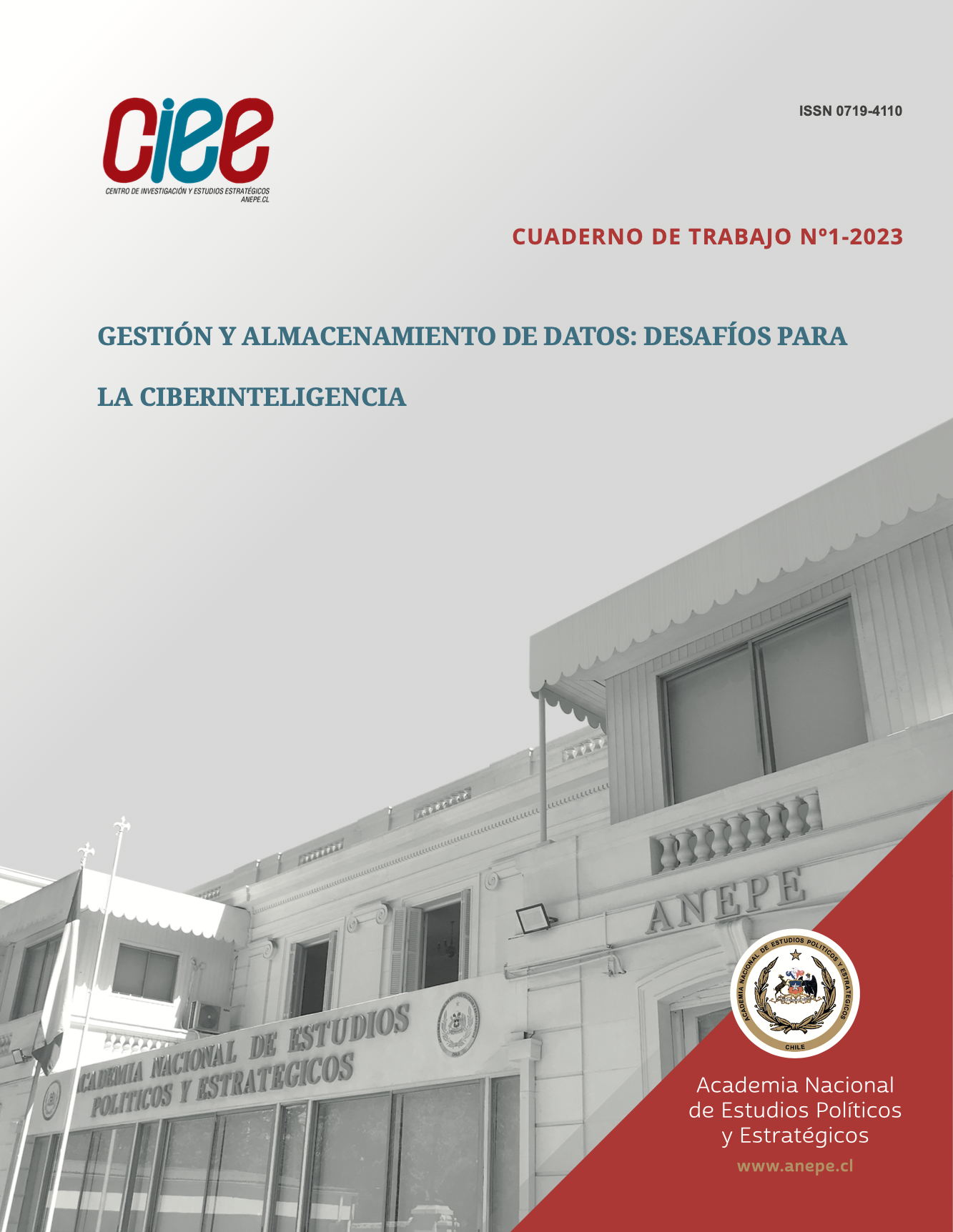GESTIÓN Y ALMACENAMIENTO DE DATOS: DESAFÍOS PARA LA CIBERINTELIGENCIA
##plugins.themes.bootstrap3.article.main##
Resumo
A medida que la información adquiere un papel cada vez más protagónico en la relación sociedad-tecnología, aumenta la necesidad de generar, procesar y almacenar datos en mayor cantidad y con mayor efectividad. Pero con este aumento de datos necesarios para el funcionamiento de la sociedad moderna, también aumenta la cantidad de datos erróneos, falsos, caducados y/o irrelevantes. Esta “basura” de datos genera dificultades en varios niveles: desde ralentizar los tiempos de consulta a las bases de datos, hasta aumentar los costos de almacenamiento digital, por mencionar algunos casos. Este estudio aborda las dificultades que este fenómeno plantea para el campo de la ciberinteligencia, analizando algunas soluciones observadas en diversas organizaciones, y proyectando posibles caminos futuros en torno a este tema.
##plugins.themes.bootstrap3.article.details##
Downloads

This work is licensed under a Creative Commons Attribution-NoDerivatives 4.0 International License.
Los autores mantienen en todo momento los derechos sobre sus respectivos artículos, por otra parte, la Revista Cuaderno de Trabajo está distribuida bajo una Licencia Creative Commons Atribución 4.0 Internacional.
Referências
Bartlett, J. (2017). La Red Oculta. Planeta Publishing.
Bonfanti, M. E. (2018). Cyber Intelligence: In pursuit of a better understanding for an emerging practice. Cyber, Intelligence, and Security, 2(1), 105-121.
Botelho, B., & Bigelow, S. J. (2022, January 5). What is Big Data and why is it im-portant?. Data Management. https://www.techtarget.com/searchdatamanagement/definition/big-data
Cyber threat intelligence: How to stay ahead of threats. Agari. (2021, May 18). https://www.agari.com/blog/what-is-cyber-threat-intelligence
Data graveyards: Challenges and risks – Data Privacy manager. Data Privacy Manager. (2020, August 11). https://dataprivacymanager.net/data-graveyards-challenges-and-risks/
Gillis, A. S. (2021, March 24). The 5 V’s of big data. Data Management. https://www.techtarget.com/searchdatamanagement/definition/5-Vs-of-big-data
Gormley, C. J., & Gormley, S. J. (2012). Data hoarding and information clutter: The impact on cost, life span of data, effectiveness, sharing, productivity, and knowledge management culture. Issues in Information Systems, 13(2), 90-95.
Instituto de Ingeniería del Conocimiento. (2016, November 29). Infografía Big Data: las 7 V. Instituto de Ingeniería del Conocimiento. https://www.iic.uam.es/innovacion/big-data-infografia-7-v/
Marshall, E. (1997). Ethics in science: Is data-hoarding slowing the assault on pathogens?. Science, 275(5301), 777-780.
McKellar, K., Sillence, E., Neave, N., & Briggs, P. (2023). Digital accumulation be-haviours and information management in the workplace: exploring the tensions between digital data hoarding, organisational culture and policy. Behaviour & In-formation Technology, 1-13.
Sedera, D., & Lokuge, S. (2018, January). Is digital hoarding a mental disorder? Development of a construct for digital hoarding for future IS research. In Proceed-ings of the 39th International Conference on Information Systems (ICIS 2018). Uni-versity of Southern Queensland.
Taylor, P. (2022, September 8). Total Data Volume Worldwide 2010-2025. Statista. https://www.statista.com/statistics/871513/worldwide-data-created/
TechNewsDaily. Kushima.org. (2013, March 28). http://www.kushima.org/?p=812
Walsh, S. (2021). Between the spreadsheets: Classifying and fixing dirty data. Facet Publishing.
